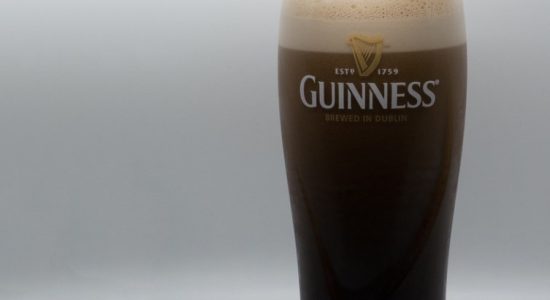What is a Cream Beer and How is it Made?

Despite what its name suggests, cream beer doesn’t contain any dairy! Instead, cream beer is a light ale made with lager yeast, row-6 barley, and an adjunct grain like corn and gets its “creamy” name from its richness. It can be brewed in 2/3 the time lagers can, and drinks just as smoothly.
Where does cream beer come from?
What sets it apart from other ales and lagers? Let’s take a look.
Origins of Cream Beer
Cream beer is a uniquely American invention.
It was originally developed in the mid-1800s by American breweries in response to the growing success of German lager breweries.
The German-inspired lagers— cold-brewed beers that were lighter to drink than traditional ale, which is heavy— were gaining popularity with the working class, decreasing sales of other breweries.
Cream beer was the response to this: a fast-brewing ale with a similar lightness to lagers and a distinctly American twist.
The odd choice of “cream beer” as the title for this new invention is thought to be a marketing tactic, implying the silkiness of cream and sugar.
Another name used for it at the time was “present use ale,” nodding to its purpose of being enjoyed now, instead of over time like more traditional heavy ales.
It was developed to be a refreshing cold drink for warm days, with its high carbonation and light body.
Today, it is still brewed using both barley and an adjunct grain like rice or more commonly corn— thought to lend a uniquely American signature to its flavor— though some breweries experiment with the brewing process and additional flavors.
Some breweries play with the “cream” aspect of its name and add lactose to their recipes, aiming for a beer that evokes a milkshake-like flavor profile.

What sets Cream Beer Apart
There are a few things that make cream beer so distinct from other kinds of beer.
One of those is the kind of malt or grain used in its brewing.
Two main types of malt are used when brewing beer: 2-row malt and 6-row malt.
While most brewers operate on the European belief that 2-row malt has a fuller flavor, manufacturers of cream beer typically use 6-row malt, which gives a grainier final flavor.
Combining other types of grain (in this case corn or rice) with the base malt alters the final product.
For cream beer, it lightens the feel of the ale closer to a lager.
It is because of the use of 6-row that cream beer can be combined with grains like corn and rice so effectively.
6-row barley has a high diastatic power (DP), meaning that it converts the starches in the grain into sugars really well.
The sugars present in the wort (unfermented beer) eventually convert to alcohol during the fermentation process.
The high DP in 6-row malt allows the corn or rice to remove the heaviness of the lone malt and lighten the overall flavor.
Historically, cream beer became so popular because of its fast production time and wide appeal to consumers.
Manufacturers could produce more products more quickly, that in turn drew in fans of lager and ale, as well as garnering its own following.
This was great not only for consumers but also for breweries, who could now turn a faster profit in addition to reducing the number of breweries with whom they had to compete. More products plus fewer competitors equal big benefits.
Though the brewing environment is not the same as it once was, modern manufacturers continue to benefit from the distinctive beverage.
Cream ale tends to be more bitter and fruity than other kinds of ale. It also has a higher alcohol content than lagers typically do.
The appeal of cream beer is its combination of the best parts of ale and lagers— you get the light, smooth texture of lagers, as well as the booziness of ales.
Cream ale is a happy medium between the two.
How Cream Beer is Made
The main attribute of cream beer is its combination of malt and corn, balancing it between an ale and a lager.
The bulk of the grain used in cream ale is typically 80% 6-row barley malt, with the remaining 20% consisting of flaked corn or corn-based sugars.
Other adjuncts used may include rice, carafoam, or light caramel malt, though they are far less common. However, there is more to the brewing process that contributes to its uniqueness than just the grain content.
Cream beer continues its hybridization of ale and lager in its recipe. While some cream ales use both lager and ale yeast, lager yeast was historically the proper ingredient. Today, breweries experiment with the balance of yeasts.
Some breweries add the yeasts at different times, using ale yeast during initial fermentation and adding lager yeast later in colder temperatures. Though cream beer is made using lager yeast, it is brewed in warmer temperatures than lagers are.
Some modern cream beers are cold lagered to enhance clarity and flavor. In these cases, cream beers are kept at colder temperatures for several weeks once bottled before lagering, to ensure the quality of the final product. Other breweries experiment with adjuncts and add-ins like fruit, lactose, and even vanilla, spinning the cream ale to something closer to a dessert drink.
The temperature at which cream beer is brewed also differs from other ales and lagers, and is perhaps one of the most important factors in its brewing. Cream ale is brewed at temperatures much higher than typical lagers, which are cold-brewed. Generally speaking, a temperature range within 65-68°F creates a final product with a good balance, limiting the ester production from lager yeast, which can ruin the flavor in too-high amounts.






